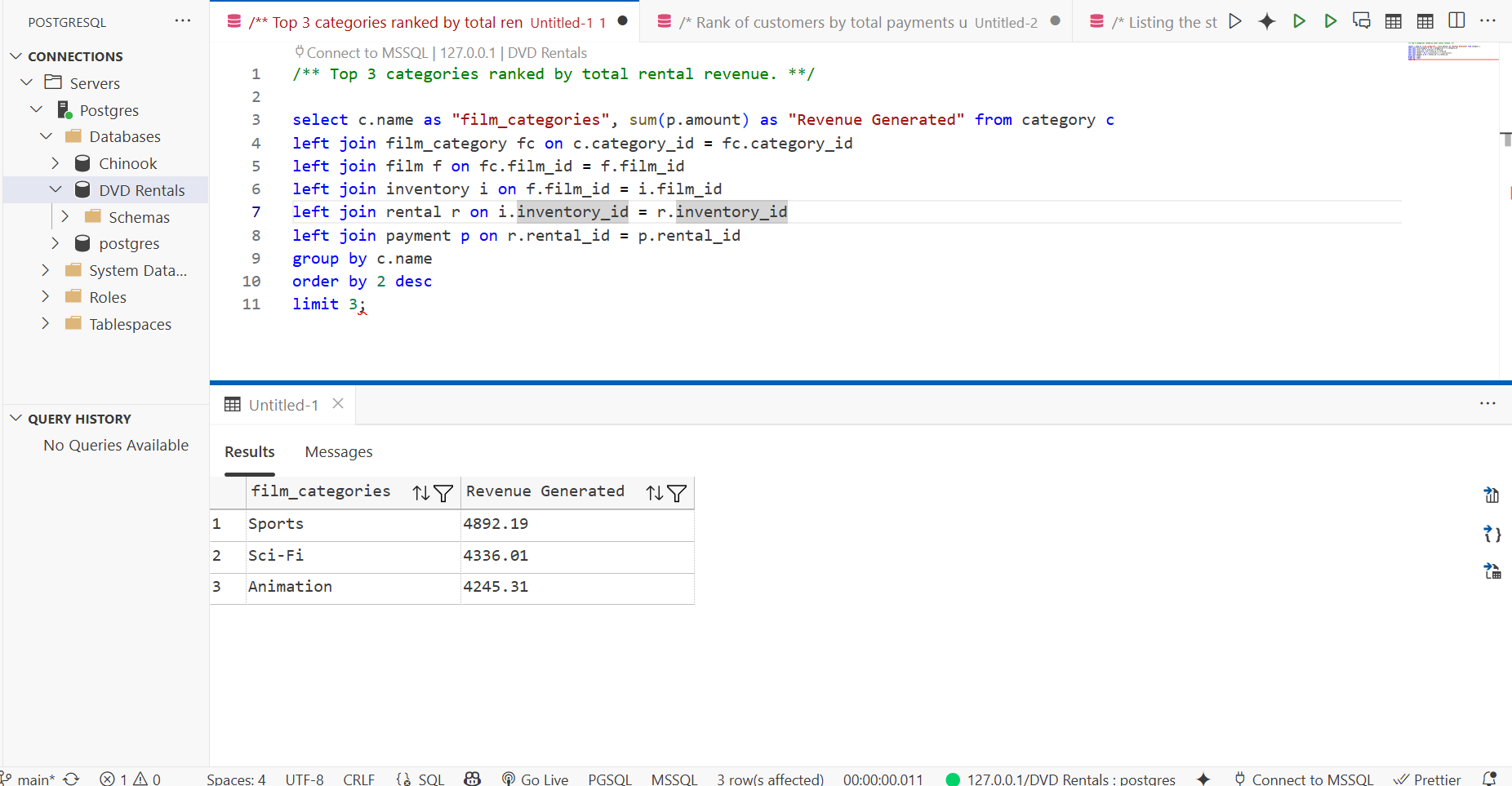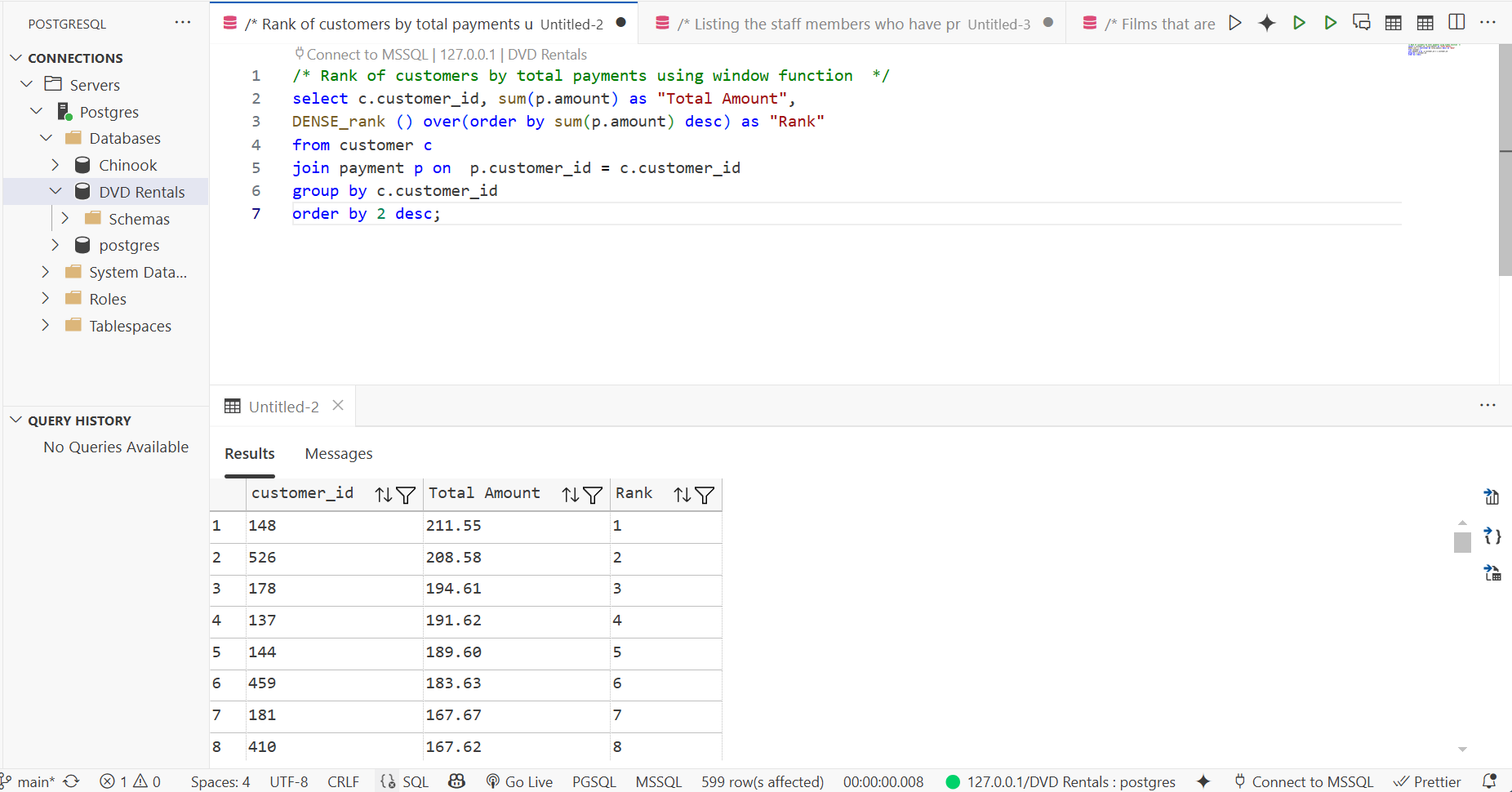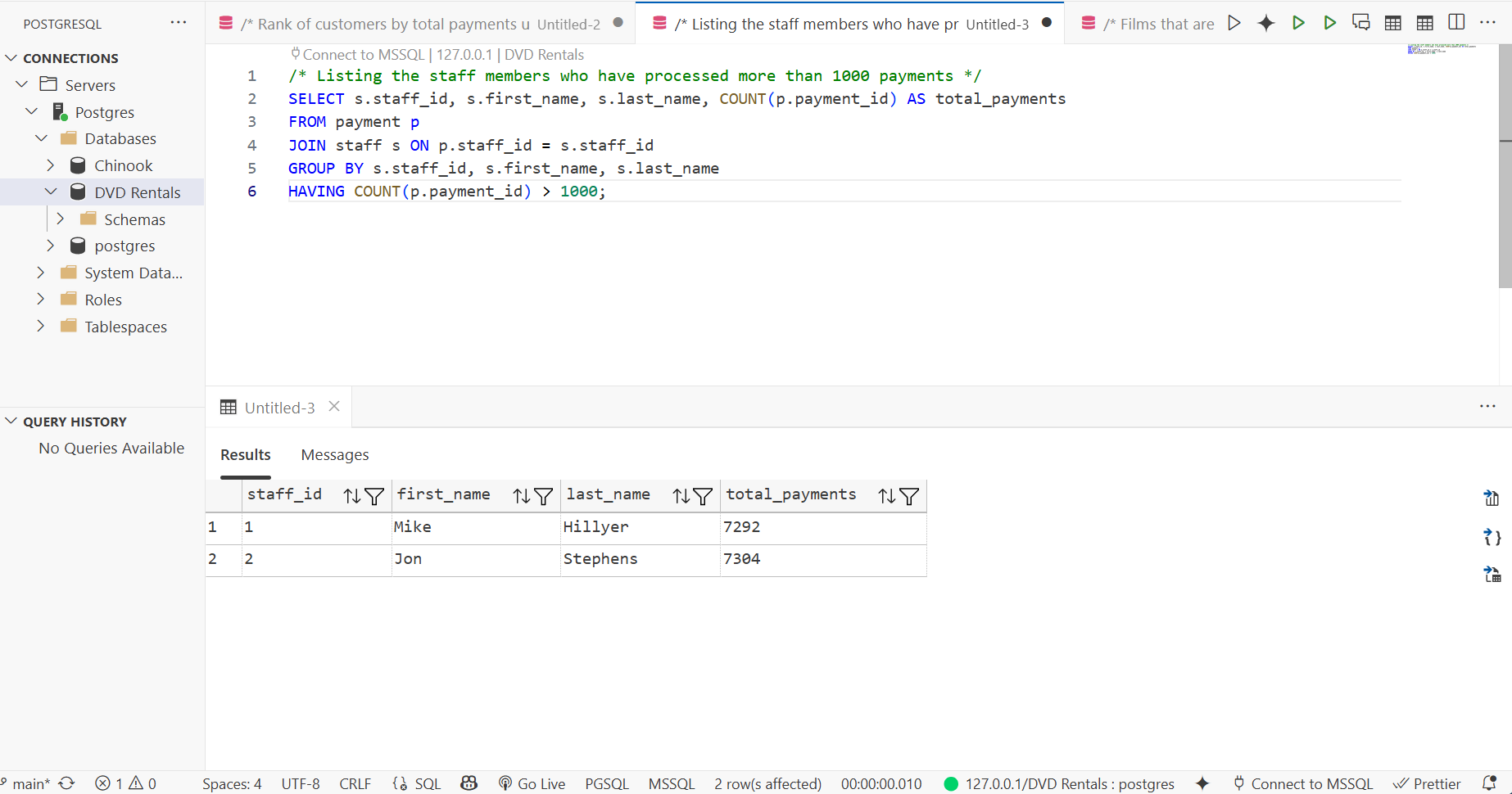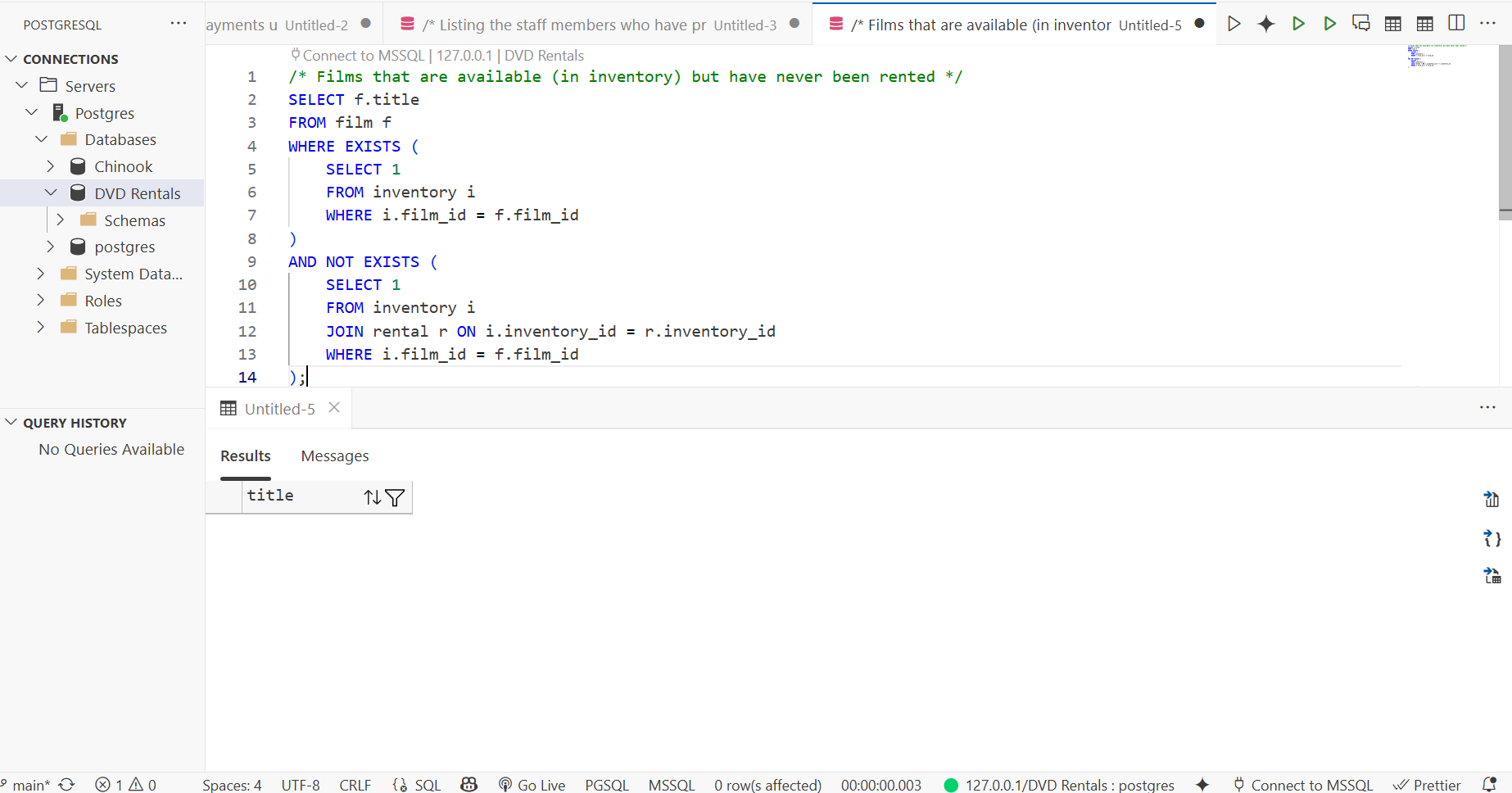How can a traditional business like a DVD rental store use its data to drive revenue and optimize operations? This project answers that question through an intensive SQL-based analysis of the classic Sakila database. By moving beyond basic data retrieval, I leveraged advanced PostgreSQL queries to uncover hidden patterns in customer behavior, inventory efficiency, and revenue streams.
The analysis culminated in a set of actionable business strategies with the potential to increase revenue by an estimated 15% through targeted marketing and improved customer relationship management.
The Business Challenge
Traditional retail businesses face increasing pressure to maximize revenue from existing customers while optimizing operational efficiency. This project simulates the analytical work required to help a DVD rental business identify growth opportunities through data-driven insights.
The Analytical Approach
Using the comprehensive Sakila database as a business case study, I applied sophisticated SQL techniques to extract actionable business intelligence. The analysis covers customer segmentation, inventory optimization, revenue analysis, and operational efficiency—demonstrating how advanced database querying can solve real business challenges.
Strategic Impact
The project showcases how data-driven insights can transform business strategy, moving from intuition-based decisions to evidence-backed recommendations that drive measurable results.



